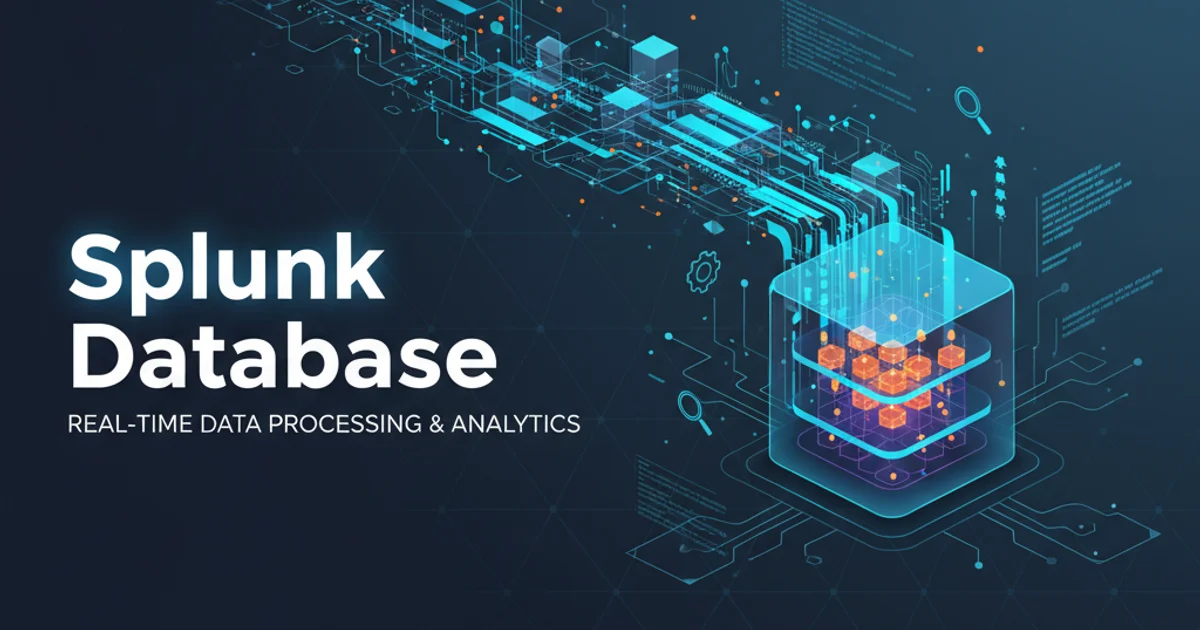Splunk Database
Categories:
Understanding the Splunk Database: Indexing and Storage

Explore how Splunk efficiently stores and indexes your machine data, focusing on its unique database architecture and the role of Lucene.
Splunk is renowned for its ability to ingest, index, and analyze massive volumes of machine-generated data. At its core lies a sophisticated database system designed for high-speed indexing and rapid search capabilities. Unlike traditional relational databases, Splunk's database is optimized for time-series data, leveraging a unique architecture that combines raw data storage with highly efficient indexing structures. This article delves into the fundamental components of the Splunk database, how data is indexed, and the critical role of Lucene in its search performance.
Splunk's Data Storage Architecture
Splunk stores data in indexes, which are logical groupings of data. Each index is composed of a collection of buckets, and each bucket contains raw data files, index files, and metadata files. This bucket-based architecture is crucial for managing data lifecycle, retention policies, and search performance. Data flows into Splunk, gets parsed, and then written to a 'hot' bucket. As buckets age, they transition through 'warm', 'cold', and eventually 'frozen' states, often moving to different storage tiers or being archived/deleted based on retention settings.
flowchart TD
A[Raw Data Ingestion] --> B{Parsing & Event Processing}
B --> C[Hot Bucket (Writable)]
C --> D[Warm Bucket (Read-only, searchable)]
D --> E[Cold Bucket (Read-only, searchable, compressed)]
E --> F[Frozen Bucket (Archived/Deleted)]
subgraph Indexer
B
C
D
E
end
F --> G[Search Head (Queries Data)]
G --"Searches"--> D
G --"Searches"--> ESplunk Data Lifecycle and Bucket States
The Role of Lucene in Splunk Indexing
While Splunk uses its own proprietary indexing format, the underlying principles and many concepts are heavily influenced by Apache Lucene, a high-performance, full-featured text search engine library. Splunk's indexes are essentially inverted indexes, similar to those used by Lucene. When data is ingested, Splunk breaks it down into individual terms (tokens), which are then mapped to the events where they appear. This allows for extremely fast keyword searches across vast datasets. Splunk extends Lucene's core ideas with optimizations for time-series data, field extraction, and distributed search.
RAW DATA:
10/26/23 10:00:01 host=webserver status=200 user=john.doe action=login
10/26/23 10:00:05 host=dbserver status=500 user=jane.smith action=query
SIMPLIFIED INVERTED INDEX CONCEPT:
"10/26/23": [event1, event2]
"10:00:01": [event1]
"webserver": [event1]
"status": [event1, event2]
"200": [event1]
"john.doe": [event1]
"login": [event1]
"dbserver": [event2]
"500": [event2]
"jane.smith": [event2]
"query": [event2]
Conceptual view of an inverted index for Splunk data
Optimizing Splunk Database Performance
Effective management of your Splunk indexes is crucial for performance and cost efficiency. This involves careful planning of index sizes, retention policies, and hardware resources. Proper field extraction at index time can significantly speed up searches that rely on specific fields, as these fields are pre-indexed. Additionally, ensuring your indexers have sufficient I/O capacity and CPU resources is vital, especially during peak ingestion and search loads. Regularly reviewing splunkd.log and metrics.log can provide insights into indexer health and potential bottlenecks.
1. Define Index Requirements
Before ingesting data, define clear requirements for each index, including data source types, retention periods, and expected data volume. This helps in configuring appropriate index settings.
2. Configure Retention Policies
Set maxDataSize and frozenTimePeriodInSecs for each index in indexes.conf to manage bucket transitions and data lifecycle effectively, preventing indexes from growing indefinitely.
3. Optimize Field Extraction
Utilize index-time field extractions for frequently searched fields. This pre-processes data, making searches significantly faster than run-time extractions. Configure this in props.conf.
4. Monitor Indexer Performance
Regularly monitor disk I/O, CPU utilization, and memory on your indexers. Use Splunk's internal logs and monitoring tools to identify and address performance bottlenecks proactively.